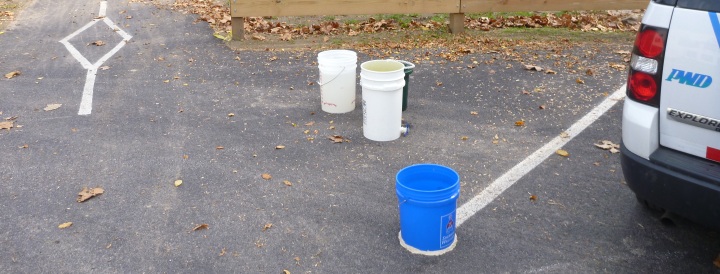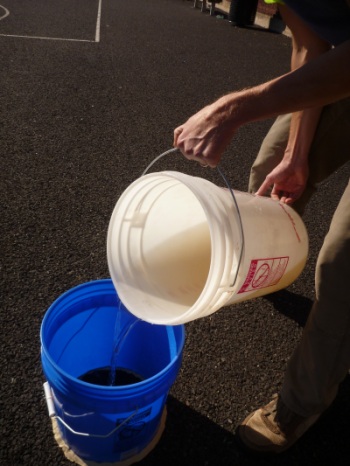GSI Performance Testing

Performance testing of green stormwater infrastructure (GSI) systems consists of controlled experiments to determine infiltration rates, storage volumes and other factors that evaluate efficiency and design. Testing is conducted both post-construction and at determined intervals. Some sites with porous paving, for example, are tested annually to track infiltration rates over time.
Please refer to PWD's Comprehensive Monitoring Plan and its Appendices for more details.
Infiltration Testing

Infiltration rate measurements—how quickly the stormwater runoff is soaking into the ground—are of great importance to the success of Green City, Clean Waters. Infiltration contributes significantly to reduction in runoff volume and mimics the natural process of rain being absorbed by soil.
There are two types of infiltration rates monitored at GSI sites. Subsurface infiltration rates measure the decrease in storage volume over time (e.g., the "drain down" of a stormwater tree trench) and can be calculated by simulated runoff testing, described in the next section. Subsurface infiltration includes both the lateral and vertical movement of water. The surface infiltration rate refers to the rate at which water passes through the surface media (e.g., the exposed tree pit soil of a stormwater tree trench or porous paving) and is measured with permeameters or ring infiltrometers.
The surface infiltration rate of porous paving (which includes porous asphalt and pervious concrete) is measured using a modified version of ASTM Test Method C1701. A graduated ring is sealed to the pre-wetted porous pavement surface, and a known quantity of water is introduced to the ring. The time it takes for the water to seep into the surface is recorded and the infiltration rate is calculated. A more detailed description of this procedure is available in Section 4 of the Comprehensive Monitoring Plan.
Simulated Runoff Testing
Simulated runoff testing (also known as hydrant testing) is the primary means of testing a newly constructed GSI project to verify that water flows through the project as designed and to measure infiltration rate. Introducing a measured flow of water from a nearby fire hydrant while monitoring water levels within the system allow us to calculate how much runoff is being stored, the rate of infiltration into the ground, and the "drain down" time of GSI projects that have slow release systems.
Section 4 and Appendix D of the Comprehensive Monitoring Plan further detail simulated runoff testing practices and procedures.